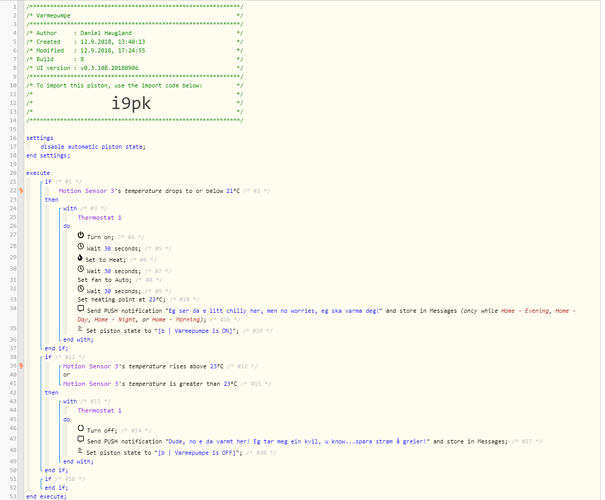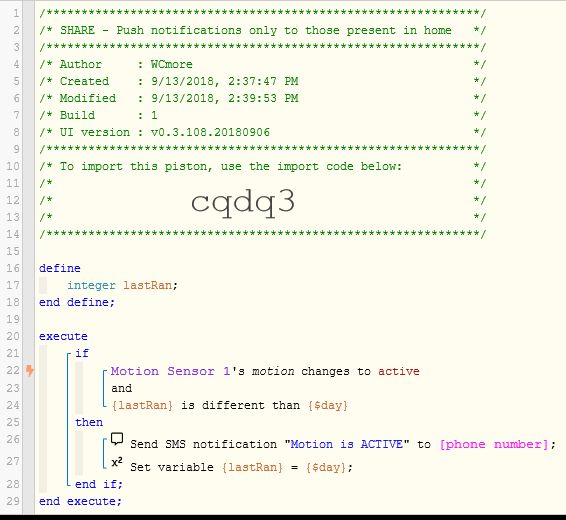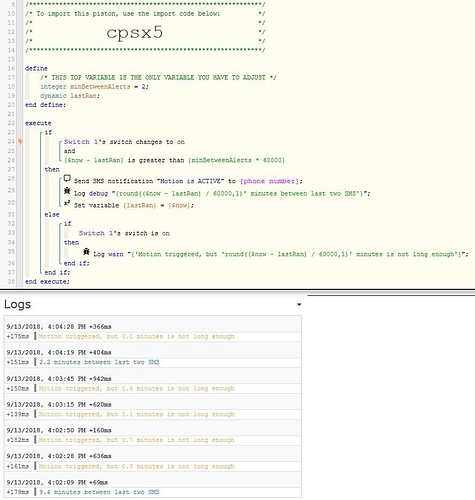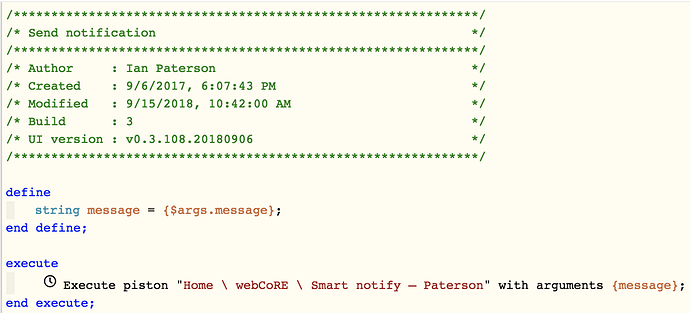1) Give a description of the problem
I have created a piston that regulates the AC Conditioner based on the temperatur. I have also set it up with Push Notifications to the three of us with mobiles. All of this works. But getting notifications on this when not at home could be an annoyance, and I would therefor like it if the notifications only was sent to those present at home. My problem is that I have not found out how to do this, nor have I managed to read myself up on it. Looking for help from you guys.
I have my phone setup with Smartthings Presencor Sensor and Webcore Presence Sensor. Have also defined my Home in Webcore.
2) What is the expected behavior?
Working as expected, not enough knowledge on how to to the rest.
3) What is happening/not happening?
As posted below, everything is working as designed. I would like to change the design, but not sure of how (just repeating my self now, sorry!).
4) Post a Green Snapshot of the piston![]()
5) Attach any logs (From ST IDE and by turning logging level to Full)
Not relevant at this time.





